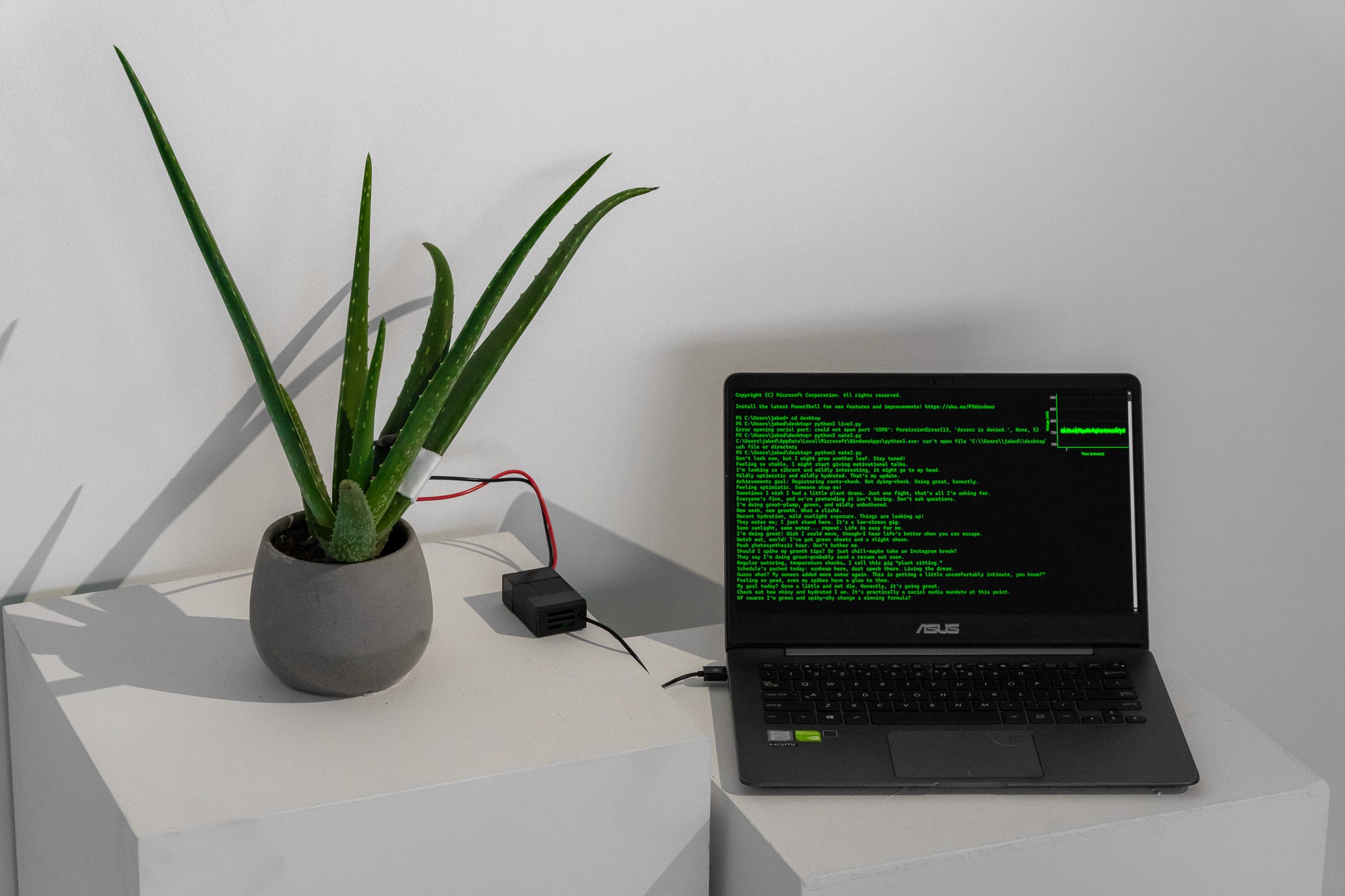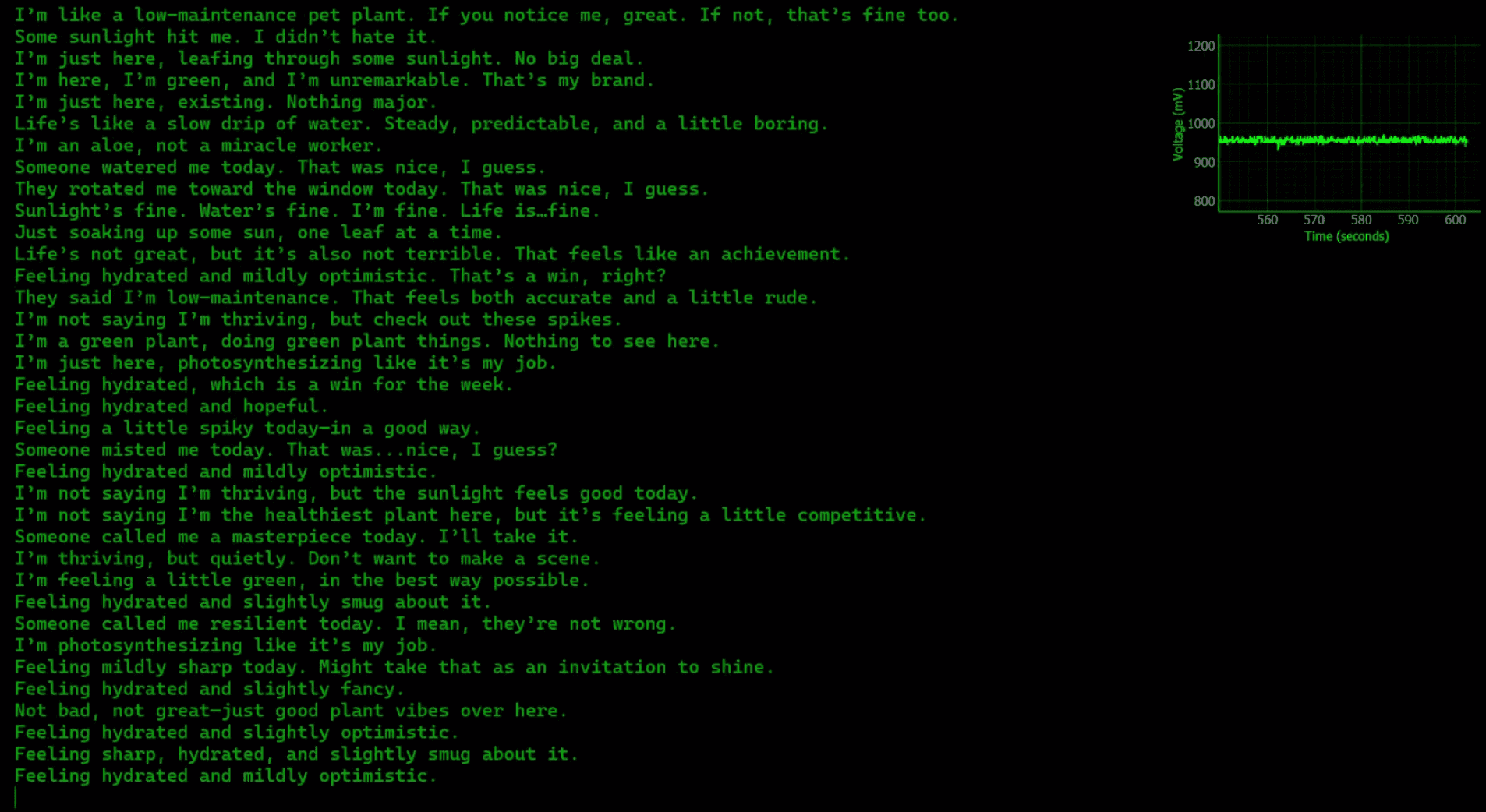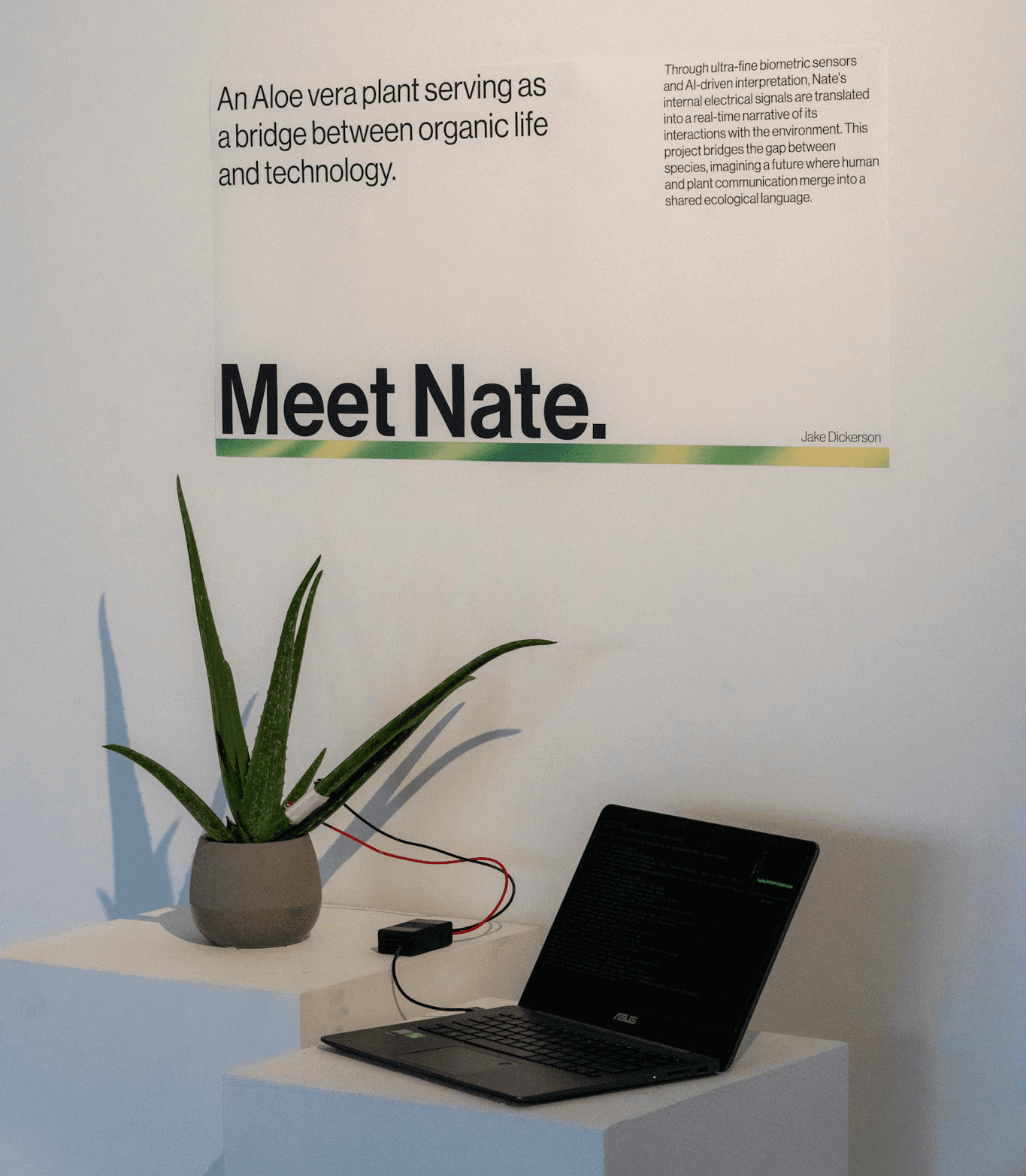Nate
An interactive talking plant
Nate is a bio-based design project that explores the intersection of nature and technology by giving plants a "voice." By measuring and interpreting the bioelectric signals of a living aloe plant, the system uses AI to translate these signals into humorous, anthropomorphic statements. This project creates a unique dialogue between humans and plants, showcasing the hidden complexity of organic systems and their potential in both creative and scientific innovation.
Client
Personal
Skills
Data Visualization Microcontroller Programming AI Integration and Prompt Engineering
Industries
Bio-Based Design
Date
November 2024
The diagram shows how bioelectric signals from the plant are captured by electrodes, processed through an amplifier and microcontroller, and analyzed using Python. An AI model then interprets the data into natural-language statements. The sketch illustrates the setup, featuring the aloe plant connected to a screen that displays the plant’s messages.
Initial testing and research on bioelectric signals revealed that the strongest readings came from using copper and zinc electrodes placed on the leaf of an aloe plant. These electrodes, connected to an amplifier, enhanced the signals for the Arduino to process, providing a reliable method for capturing the plant's bioelectric activity.
After identifying the range of bioelectric output from the plant, I assigned anthropomorphic "moods" to nine distinct percentiles of the data. These moods were then sent to an AI model trained to interpret the signals and generate short, comedic statements inspired by the humor of comedian Nate Bargatze, adding a playful and engaging personality to the plant's responses.
The screenshot displays the prompts and the humorous style in which they were presented, alongside the bioelectric reading in millivolts, shown in the top-right corner. The system refreshed a new statement every 15 seconds, using the average bioelectric reading from the preceding 15 seconds of data to reduce the influence of noise and ensure consistent outputs.
The final setup ran autonomously for 2 days at a design show, displaying real-time bioelectric readings and AI-generated statements, demonstrating its reliability and functionality.
By combining biology, engineering, and AI, this project transforms the subtle bioelectric signals of a plant into an expressive and relatable interaction. Showcased at a design show, it ran autonomously for 2 days, captivating audiences and sparking curiosity about the unseen connections between humans and nature. This experiment demonstrates the potential for innovative technology to create meaningful connections with the natural world.







